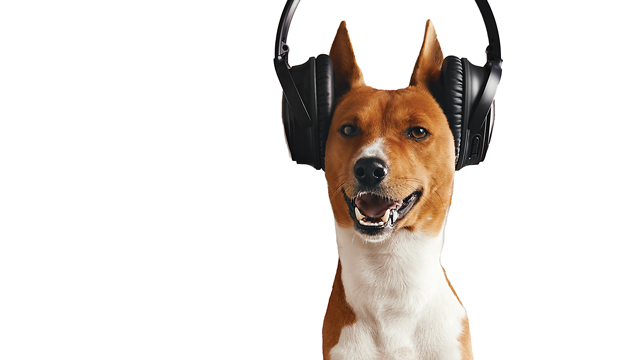Many of us enjoy the soothing rumble of a summer thunderstorm, but for our canine companions, a crack of thunder can elicit an instant state of panic.
The most common examples of noise phobias are thunder and fireworks; nearly half of dogs show a significant fear response to firework noise. Fears and phobias associated with noise can be seen in puppies as early as nine weeks of age, but noise phobias usually develop over an extended period of time.
Characteristic behavior can include hiding, urinating, defecating, chewing, drooling, panting, pacing, trembling, shaking, and barking. A fearful dog might seek out his human family, try to escape the noise by jumping through windows or chewing through walls, or run away.
Dogs diagnosed with storm phobia can react with anxiety or fear to wind, rain, thunder, lightning, and other associated stimuli, including barometric pressure changes, and even the smell of rain.
While noise and storm phobias are common, they can be challenging to treat. Although there is no cure for noise phobia, treatment approaches include behavior modification, environmental controls, and medication. It is best to use a multi-faceted approach, realizing that no one treatment will work every time for every dog.
Be Present
You can relieve some of your dog’s stress with just your comforting presence. It’s harder to stay home consistently during thunderstorms, but there may be times when you can make the choice to stay home rather than go out and celebrate – for example, Independence Day and New Year’s Eve.
Use Medication
Short-acting anti-anxiety medications can greatly enhance a sound-sensitive dog’s quality of life. It not only helps to ease immediate fears, but over time, can also reduce their overall reaction to storms.
Speak with your veterinarian about which medications are right for your dog. I caution against using certain tranquilizers, such as acepromazine, for noise-related phobias. This particular medication is a dissociative, which means it can scramble a dog’s perceptions and for some pets, heighten their sensitivity to loud noises. If your vet isn’t well-educated in the use of behavior modification drugs, urge him or her to conduct a phone consult with a veterinary behaviorist prior to prescribing.
Manage the Environment
Reduce the intensity of the fear-causing stimuli by closing curtains to shut out the visual effects (flashes of lighting, lights, or sparks of fireworks) that your dog negatively associates with a fearful sound. Some pets prefer to have a safe space where they can hide, such as a bathroom, dark closet, or covered crate.
White noise machines or the TV can help mask the sounds; as can the specially composed “Through a Dog’s Ear” sound therapy music. In all cases, it is important to play these alternative sounds during relaxing times so your dog already has a calm, positive association with the music. If you play them only during storms, he may form a negative association with the otherwise calming music.
You can also try Mutt Muffs to muffle the sound. Keep in mind, these are not noise-cancelling headphones, so some noise is still audible. And again, work to create a positive association with these before you need them.
Some dogs respond positively to compression-wear, such as Thundershirts and Anxiety Wraps. These swaddling garments calm your dog through the use of acupressure points.
Counter-Condition
Use recordings of thunderstorm sounds and/or storm sounds. Start with the volume at barely audible or even inaudible levels, if your dog is still worried. Pair this low-level sound with wonderful things, such as high-value treats, or games of fetch or tug, until your dog gets happily and consistently excited in anticipation of his favorite things when you turn the sound on. Then turn the volume up slightly and continue with the training.
This is a long-term project; don’t expect to turn up the volume every session. And keep in mind, your storm-phobic dog may also react to wind, rain, and even the change in barometric pressure. When a real storm approaches (or the fireworks begin), try the counter-conditioning strategy at the earliest hint of stimulus, and keep your dog playing the game as long as possible.
Never Punish a Fearful Dog
Under no circumstances should punishment be used by an owner who is trying to help his or her dog overcome noise or storm phobias, especially if there has been physical damage to the home that occurred while the owner was away. Punishment only serves to increase the pet’s anxiety and fear.
Be patient with your noise-phobic dog and partner with your veterinarian as early as possible to help lessen the impact of loud and frightening noises.




